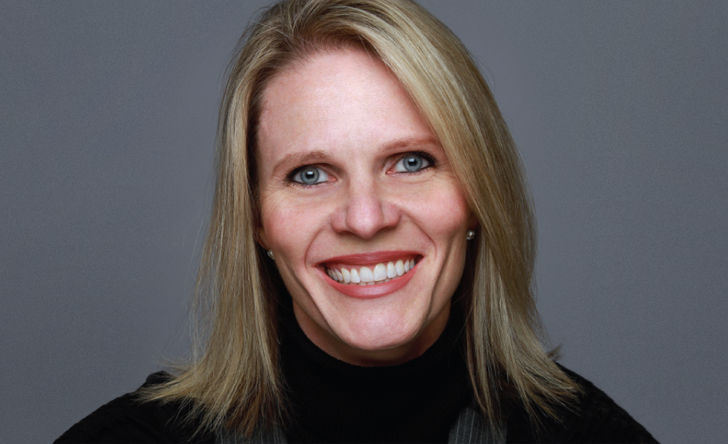The mutual fund industry has long felt it has been the target of mounting regulations – rules that the insurance and other financial services industries do not have to follow. But now those in the insurance field are saying it’s probably just a matter of time before they’re next, especially when it comes to issues of disclosure and transparency.
Disclosure and transparency have been front and centre on mutual fund fees, especially in countries like Australia and the United Kingdom and some regulators in other countries have started the push to harmonization of rules.
“So that kind of trend is definitely in flight and is not going to go away,” said Byren Innes, senior strategic advisor at PwC Canada. “To think that these….changes are going to affect just mutual fund licensed people is a little naïve. There will be some attempt to do some harmonization and have the same kind of disclosure and transparency and reporting requirements that are coming up on mutual funds apply to insurance products of an investment nature – whether they be annuities, segregated funds or variable insurance contracts.”
Pushing the latest regulations on disclosure is the three-staged CRM2 project. Under these rules, mutual fund advisors will eventually provide clients with an annual summary of all charges and other advisor compensation, including trailer and referral fees. The regulations cover advisors selling securities to retail investors in Canada – specifically those registered with the Investment Industry Regulatory Organization of Canada (IIROC) and the Mutual Fund Dealers Association (MFDA) – but not those selling segregated funds.
Questions may arise
But at a September meeting of the Canadian Life Insurance EDI Standards Association (CLIEDIS), Al Knight, department leader at Edward Jones, said clients who receive both insurance and mutual fund products from an advisor, may start to question why disclosure isn’t forthcoming from the insurance side.
“At the end of next year I have to give clients a summary of all the fees and commissions that the broker has charged them,” said Knight. “And I know the first question I am going to get is: ‘Well, you sold me an insurance policy – it’s not on this list, why not?’ So I need that data so I can incorporate it ahead of the curve – when we are told we have to do this…and serve the client fully.”
About 80% of financial advisors licensed to sell insurance in Canada also have MFDA or IIROC licenses to sell mutual funds, said Innes. Having one set way of conducting their businesses on both the insurance and mutual fund sides may be an easier and more efficient way for dually licensed advisors to conduct their own businesses.
“In their everyday practice they are almost going to have two regulatory hats on at all times – what do I have to do to satisfy insurance regulators or what do I have to do to satisfy, let’s say, MFDA regulators?” said Innes.
But there is significantly more paperwork to put together and submit for mutual funds than for segregated funds, said Terri DiFlorio, president of MGA Hub Financial. In reality, the advisor prepares a needs-analysis of some type regardless of the product, including an analysis of risk tolerance and time horizon, said DiFlorio. “They’re basically doing the same work in terms of planning for the client and choosing the product but then once it comes down to it, [with mutual funds] they’ve got to do a KYC, submit it with the trade, make sure they deliver the fund facts – there is just so much you have to do for a mutual fund that isn’t regulated on a segregated fund.”
On the other hand, said DiFlorio, the beauty of the mutual fund industry is that regardless of the product chosen, the process is the same for all companies. “I don’t see the insurance side or the segregated fund side going that route. Insurance companies just don’t tend to work that way – or historically haven’t. But I’m not sure that any similarity in compliance regime is going to necessarily make it an advantage for somebody who is already selling mutual funds.”
A challenging part of disclosure on the life insurance product side is that commission structures are complex and front-end loaded and “would be just shocking to most people,” said Innes. “It’s not like the 1% or 2% or 5% trailers in the mutual fund world. These are commissions that are sometimes 100% or 200% of the first-year deposit on an insurance policy. So if I said to a client: the first-year premiums go to me and after that they go to the insurance company: how would they feel about that?” As well, he said, commissions have chargeback and clawback provisions, with some of the premiums going to MGAs and other costs and are much more complicated than a security or dealer transaction.
Nancy Allan, executive director of the Independent Financial Brokers of Canada, said many advisors already voluntarily disclose compensation and it’s just a matter of educating clients. “Life insurance is a long-term product so you may get a large commission up front but you have to service that policy for the life of the policy and that can sometimes be decades.”
Advocis already has a best practice for insurance advisors to disclose commissions, said president Greg Pollock. Another best practice is for the advisor to prepare a letter for the client outlining what issues were discussed in a meeting, the kinds of products as well as how they are compensated. “You should outline how you are being paid as a percentage of the product,” said Pollock. (The CRM2 rules will require advisors to put costs associated with buying a product in dollar terms.)
He says Advocis does not survey its members as to whether they are following all best practices. “If our professional bar proposal is to be fully implemented there is no doubt that those kinds of things would likely be addressed by the profession moving forward.”
Pollock said he likes the idea of more transparency and disclosure – as outlined in CRM2 – saying moves to do the same thing in the insurance industry will “probably” take place.
“We are not opposed to that,” said Pollock. “We have spoken for some time about the need to raise the professional bar about professional standards, enhancing consumer protection. But at the same time, we absolutely believe that there has to be choice in the system. And for some reason, the regulators seem to have their rifles drawn and pointing towards just this one form of compensation.”
He said a recent study by PwC indicated that there are 100,000 financial advisors in Canada today. About 450 of those advisors are fee-only with the majority charging some of embedded commission. “If you change that overnight, many of those clients are not going to write a separate cheque to those financial advisors for financial advice.”
Different tacks
The life and mutual fund regulators have also traditionally taken different tacks in bringing about new rules. The life insurance side is a principles-based industry compared with the mutual fund industry’s more prescriptive attitude, said Allan. As well, there tends to be a much more consultative approach taken when it comes to life insurance.
“I think there is a perception that life insurance is more lightly regulated – I have certainly heard that before. I disagree. I think it’s just regulated in a different way.”
Allan said there is a “watchful mood” among stakeholders in the life insurance business, keeping an eye on what the regulators are thinking and keeping in close contact with regulators and government to make sure they have a voice in whatever happens.




